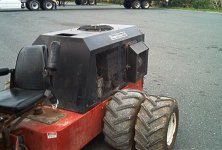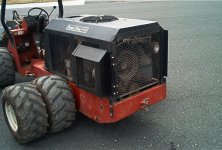A big double Kudos to you and Sedgewood for those wiring diaphrams. I had a number of problems.
1. We didn't track down the correct fact. wires for the alternator, some how when testing the factory wire didn't light. Prob., test light ground? We ran a new wire to the "on" from the switch, which rubbed thru and shorted.
2. I found a loose wire in th dash, where I added. Tyring to rerun it and clean it up; I switched the hot that was supposed to power on the Fuel shut off solenoid.
3. I was looking at te wrong thing, thining it was the FS; te FS wasn't clicking on whe I thought it was. Terry at PT straightened me out on that one.
4. I unhooked the jucntion box to try to get to those fuses, when unhooked it doesn't ground, and the FS wouldn't work.
All the problems were fixed by 1:00 today. The alternator is working perfectly, and now it cuts off by the key.


